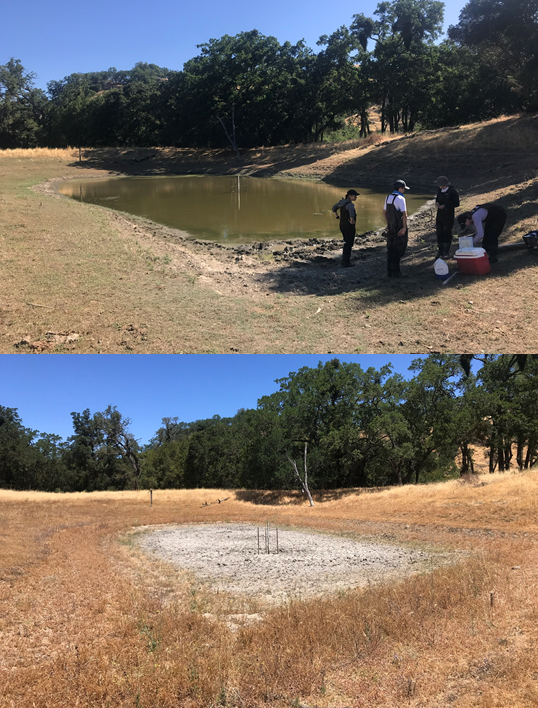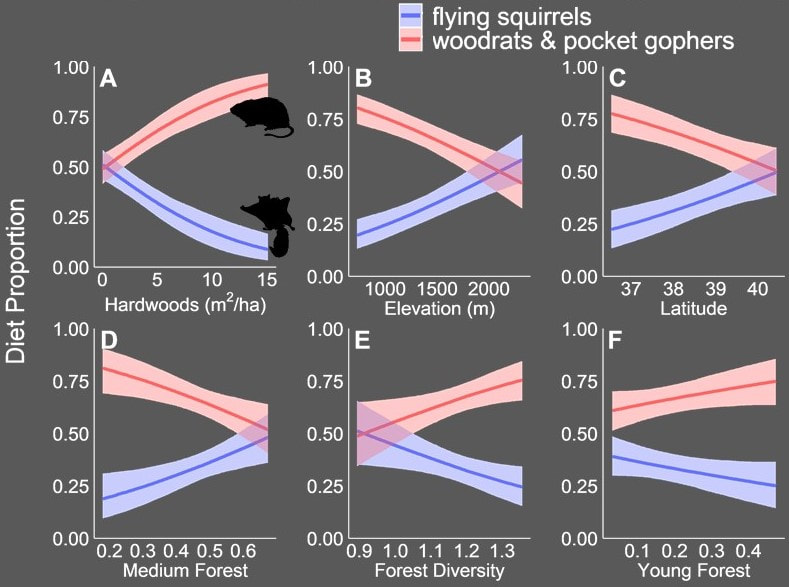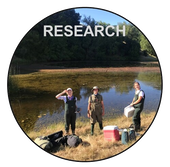Ecology in dry, burnt, invaded and otherwise altered landscapes
|
As land use, fires, drought, and biological invasions alter the face of our planet, it's increasingly important to understand how focal species and communities respond to novel, shifting pressures. Quantitative research on the response of organisms to these factors is a necessary prerequisite to effective conservation and management. To date, I've lead and collaborated on several projects falling within this theme, and there's more to come! Relevant papers: Site occupancy and reproductive dynamics of California spotted owls in a mixed-ownership landscape. Hobart et al., 2019, Forest Ecology and Management Trophic interactions mediate the response of predator populations to habitat change. Hobart et al., 2019 Biological Conservation Habitat selection by spotted owls after a megafire reflects their adaptation to historical frequent-fire regimes. Jones et al. 2020, Landscape Ecology Stable isotopes reveal unexpected relationships between fire history and the diet of Spotted Owls. Hobart et al., 2021. Ibis Population decline in California spotted owls near their southern range boundary. Tempel et al., 2022. Journal of Wildlife Managment |
Natural enemy ecology: Predators and parasites
|
|
Predation and parasitism are just plain interesting—there are winners, losers, and energy/nutrient movement. They are also very important ecological processes, with consequences for individual fitness, population dynamics, and community structure. I've long been fascinated by the impacts of predation and parasitism (initially spurred by Estes et al. 2011, naturally), and now have a diverse body of research on these interactions.
Relevant papers: Trophic interactions mediate the response of predator populations to habitat change. Hobart et al., 2019, Biological Conservation Stable isotopes reveal unexpected relationships between fire history and the diet of Spotted Owls. Hobart et al., 2021, Ibis It’s a worm-eat-worm world: Consumption of parasite free-living stages protects hosts and benefits predators. Hobart et al., 2022, Journal of Animal Ecology Into the danger zone: How the within-host distribution of parasites controls virulence. Johnson et al., 2024, Ecology Letters |
Consequences of interactions for conservation
|
Although the importance of interspecific interactions is well-recognized for the management and conservation of some species, their relevance remains unexplored in many scenarios. In many cases, the success of conservation of some particular focal species hinges on stabilizing or reintroducing that species' interactions with others in its community. A wholly single-species approach to management thus often fails. Relevant papers: Trophic interactions mediate the response of predator populations to habitat change. Hobart et al. 2019, Biological Conservation Density dependence influences competition and hybridization at an invasion front. Wood et al. 2021, Diversity and Distributions |





